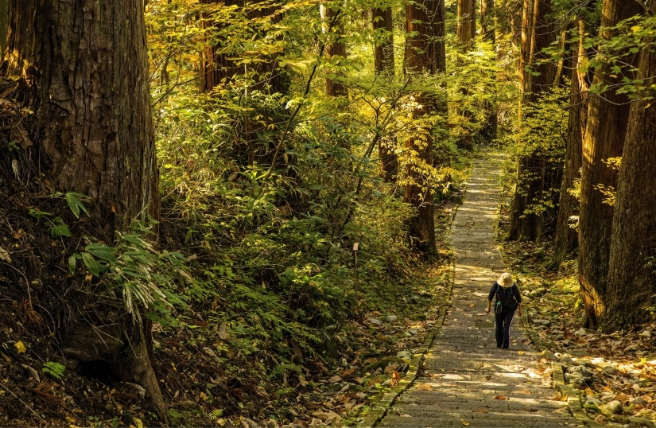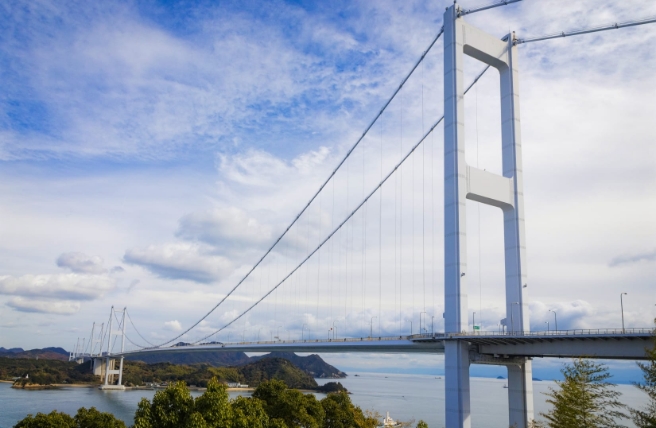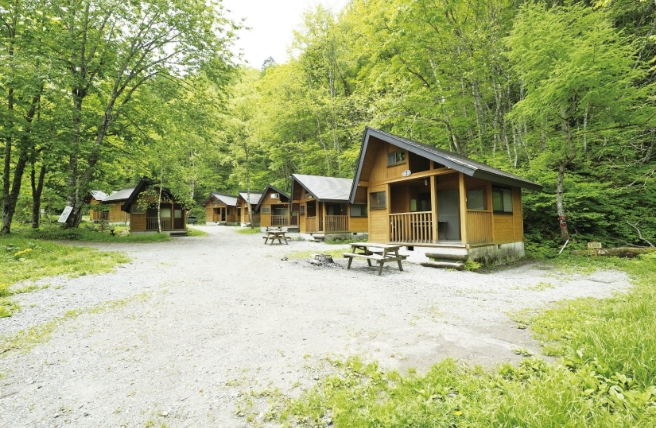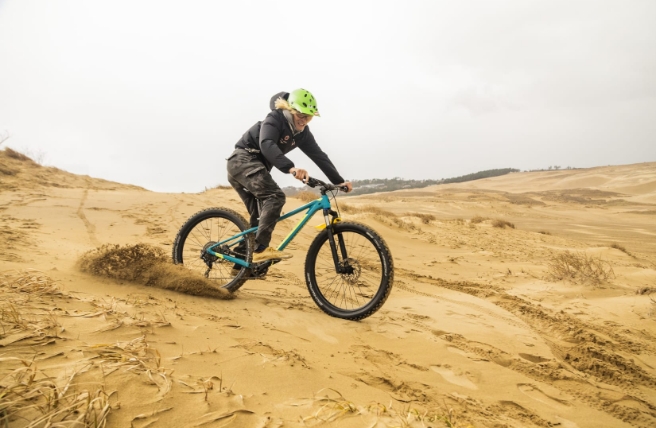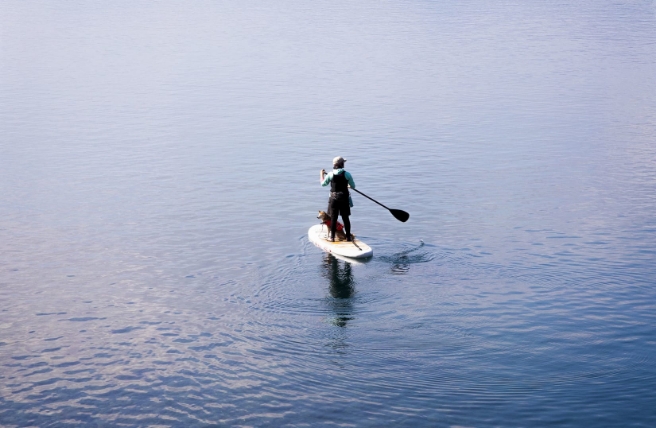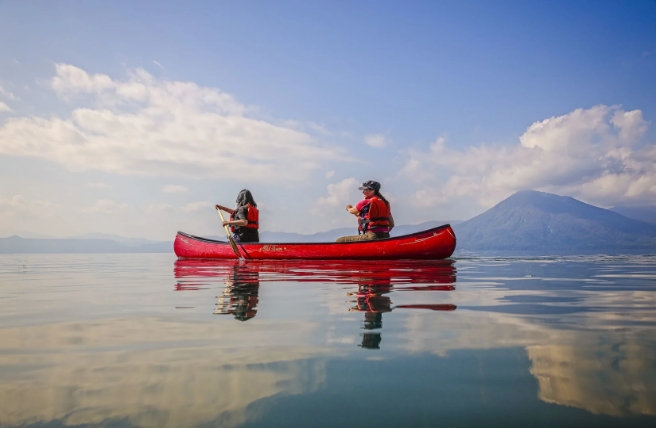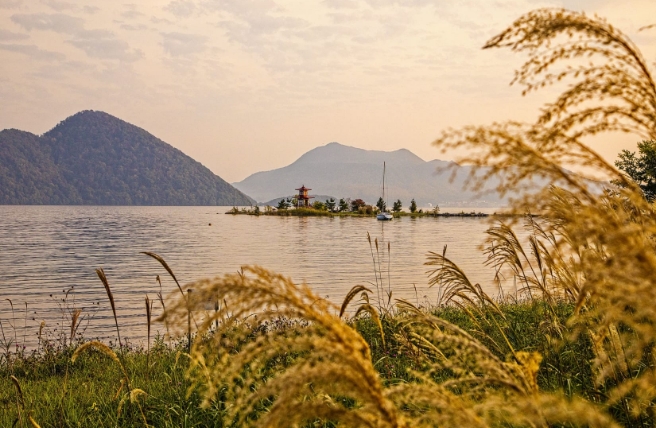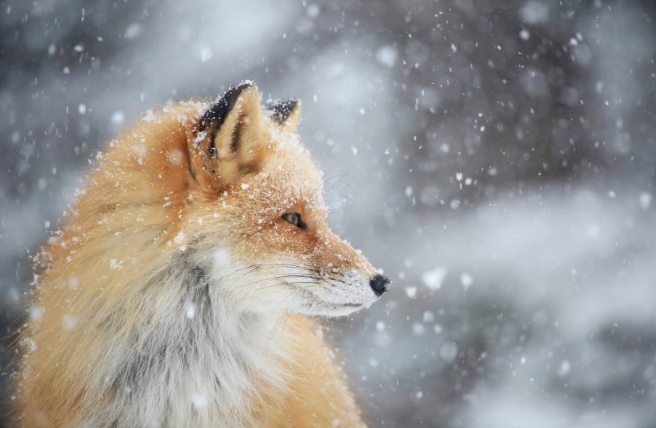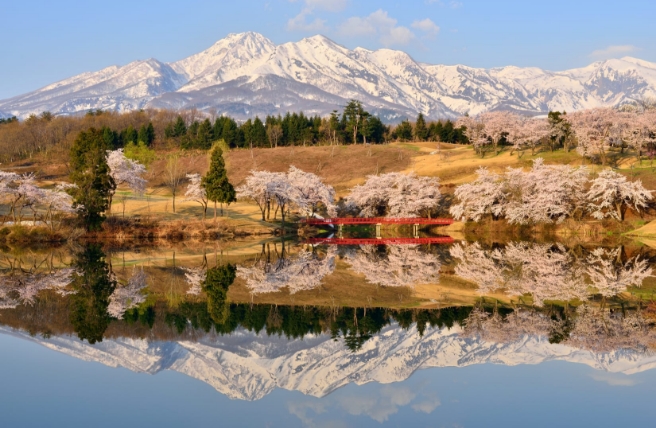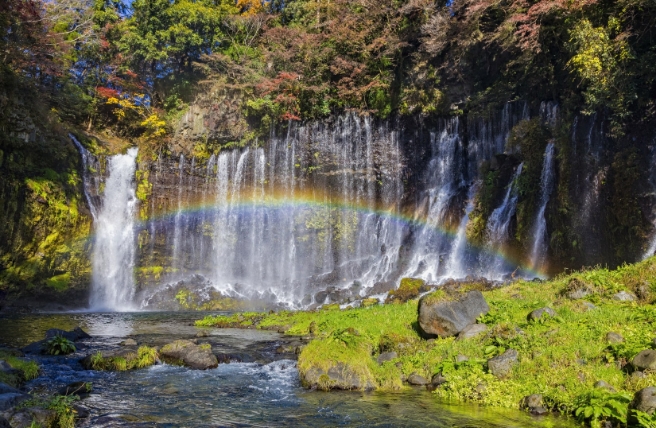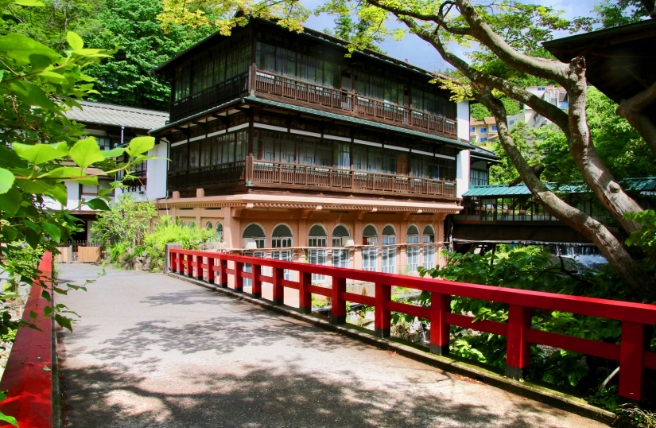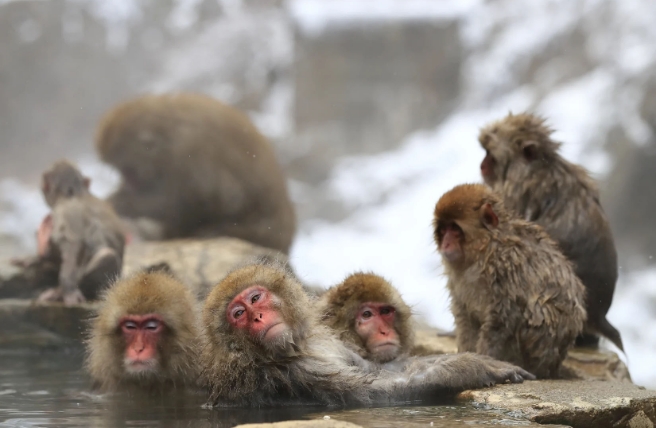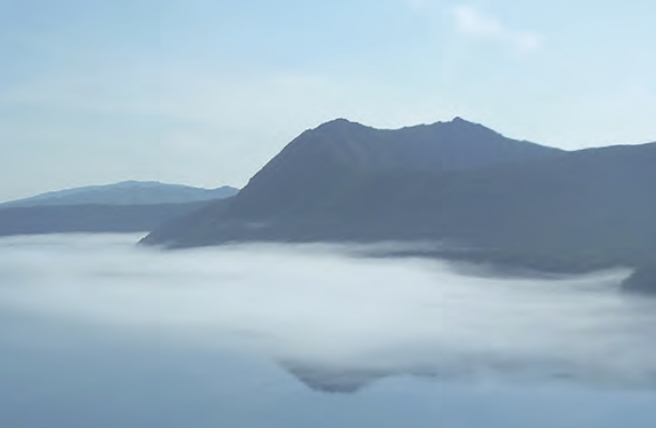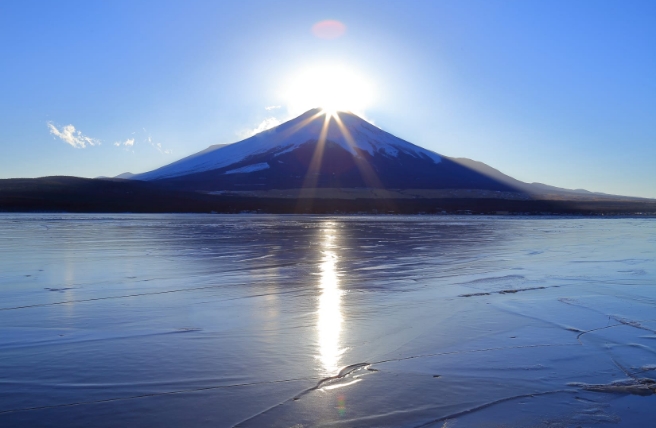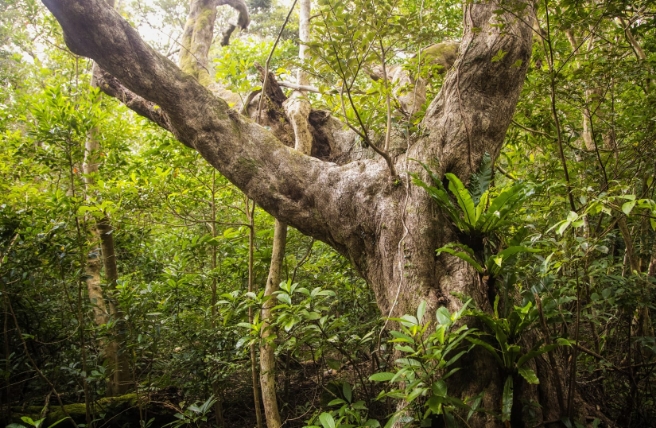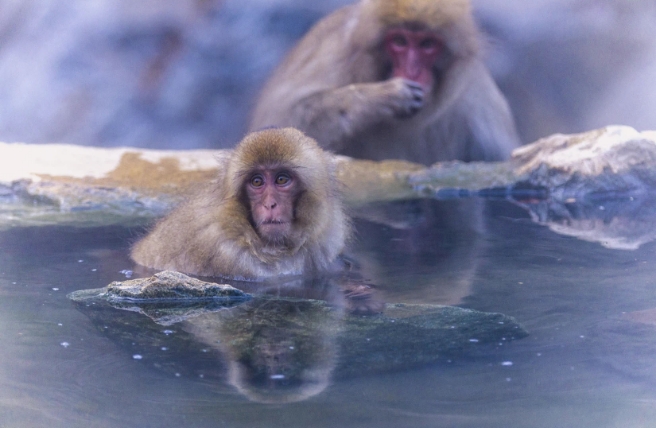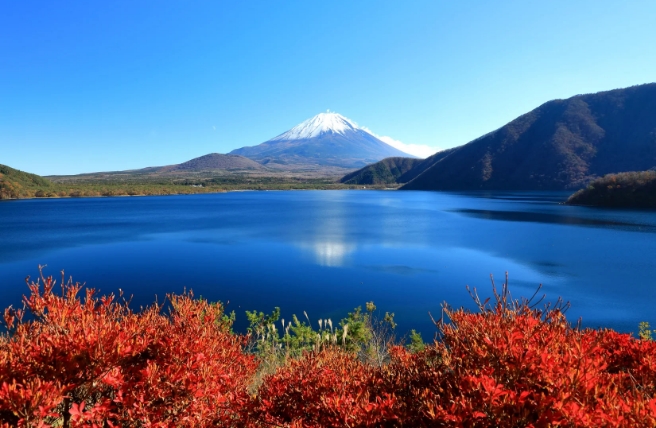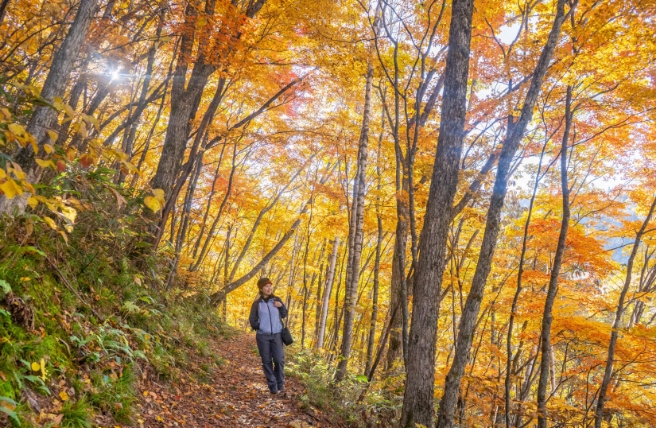Yamagoya lodges are essential hubs along Japan’s mountain trails, offering rest and hospitality while helping to preserve the natural environment.
Japan’s mountain ranges, with their striking landscapes, attract outdoor enthusiasts and adventurers of all levels. From beginner friendly trails to challenging ascents, the country boasts a vast network of hiking routes. Some of these paths were the training routes of ascetic monks long before mountaineering became a popular pastime. The over 700 yamagoya—mountain lodges serve as vital support hubs along these trails. These include manned lodges offering rest, meals, shelter, and other lodges set up as shelters in remote mountain locations.
One such lodge is the Hokkein Onsen Sanso, nestled at 1303 meters in the heart of the Kuju mountain range, part of the Aso-Kuju National Park. The lodge is located at the spot of the Kuju-san Hokkein Hakusui Temple, a major spiritual center of the Tendai Buddhist sect, founded in 1470. In 1882, the current owner’s grandfather established Hokkein Onsen Sanso as a yamagoya to accommodate the increasing number of recreational climbers of those days. Today, it offers a range of accommodations, from private rooms to dormitory lodgings, a dining room capable of serving 100 guests at a time, and the highest natural hot spring bath on the island of Kyushu—where weary hikers can soak their muscles while taking in views of the surrounding peaks.

Serving day-trippers and overnight lodgers
Takehisa Hirokura, the present owner of the lodge, says that the Kuju area is one of the most popular hiking destinations in Kyushu. “There are nine 1,700-meter peaks that are rather easy to climb,” he says. “The landscape is diverse, and can be enjoyed in all seasons. And in places when the weather is good, the low height of the trees allows you to see great distances in all directions—even as far as the island of Shikoku.”
The lodge is about a two-hour hike from the trailhead, so visitors have options: stay overnight with two meals, drop by for lunch, or just take a hot-spring bath and head home. For many, the allure of the lodge extends beyond the physical exertion of hiking. “Some guests stay overnight just to see the stars from a mountain location,” says Hirokura. “There are no bears or other dangerous animals in Kyushu, so it’s safe to go out at night.”
International visitors are often surprised at the high level of the service at yamagoya, with amenities like freshly prepared meals and even a choice of draft beer, for example, at Hokkein. Until quite recently, these were all hauled up by horseback or on the backs of bokka porters. Hokkein also holds special events on some weekends throughout the year, such as jazz nights, offering a unique blend of outdoor adventure and cultural enrichment.

More roles for some lodges: from trail maintenance to rescue activities
Beyond hospitality, some yamagoya lodges like Hokkein play a crucial role in the preservation of Japan’s mountain environments. These lodge operators are deeply involved in the maintenance of the trails, staying up-to-date on trail conditions and cooperating with various agencies to ensure safety. “A trail is never finished,” says Hirokura. “We constantly monitor and repair them, especially after storms, when the landscape can change dramatically. We also put up signs, for example, in areas where the trails can be confusing—where it is easy to get lost.”

Some lodges, like Hokkein, also assist in maintain rescue operations. “In a mountainous region, accidents happen—people get lost, twist their ankles, or simply tire out,” says Hirokura. “Even though GPS has streamlined rescue efforts, there are days when we get very busy responding to accidents.” He stresses the importance of having a climbing plan and, of course, being physically prepared. “We’ve set up stretching stations in front of the lodge where people can warm up before and after their hike.”

Protecting the environment
To minimize its environmental impact, Hokkein has adopted sustainable practices. “We use water from the mountains, generate our own electricity, and have a sewage filter system going back five decades,” says Hirokura. Visitors are also encouraged to carry out their own trash to help preserve the pristine environment. Some lodges actively work to control the spread of non-native species, and discussions are underway in the Kuju area on how to address the threat to local plant life from the growing deer population, caused by the lack of natural predators and improved environmental conditions.
“One of our important roles is to help visitors enjoy what the location has to offer,” says Hirokura, adding that the local attractions are varied enough to tempt lodgers to extend their visit. “A young woman from Israel visited the other day,” he says. “She ended up staying for three nights, and took different hiking routes every day.” There are some 58 hiking routes in the area, which is located not far from the Bogatsuru Wetlands, located in the center of the Kuju mountain range.

Seasonal and religious attractions
Each season brings a new palette of colors to the Kuju mountains. Spring is marked by the blackened meadows from the controlled burning to prevent the forest from spreading into the wetlands; summer brings lush green meadows and the colorful mountain flowers; autumn showcases vivid red foliage; and winter coats the mountain peaks with snow. The most popular time of the year is during the months of May and June, when the blossoms of the Miyama Kirishima azaleas turn the mountain slopes pink, drawing visitors from all over the country.
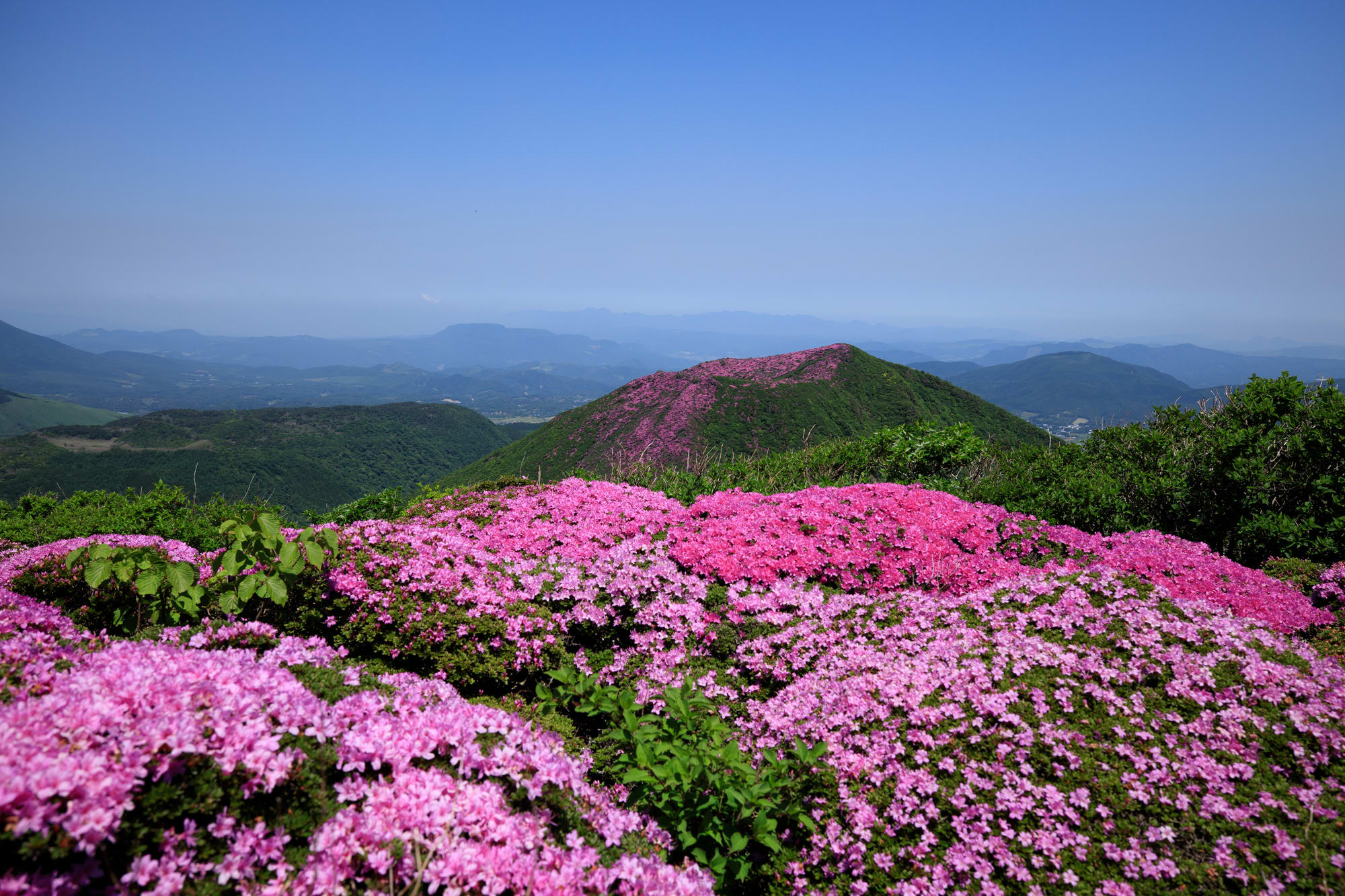
The religious connections are also part of Hokkein’s historic attraction. “This was once a temple, and I am a registered monk,” says Hirokura. “There are a number of religious statues in the area, including one of the Kannon (Goddess of Mercy) next to the lodge. Some people see it as a symbol of good luck and safety during their hiking.”
For the many thousands of outdoor enthusiasts who visit Japan’s spectacular national parks, yamagoya lodges like Hokkein Onsen Sanso serve as gateways to the natural wonders of the area. They provide not just physical sustenance, but also cultural and spiritual enrichment, enhancing the hiking experience with comfort, safety, and a connection to nature. Whether you’re seeking adventure, solitude, or a deeper understanding of Japan’s sacred landscapes, these mountain lodges offer an essential refuge in some of the country’s most breathtaking locations.

Some Tips on Enjoying Your Stay at Yamagoya Mountain Lodges
- Be sure to submit one of the mountain entry forms that are available at trailheads or online before you begin your hike.
- Most hikers in Japan arrive early at the yamagoya, both for safety reasons and to avoid disturbing other hikers’ rest. Following this custom is recommended.
- The services offered, such as dining halls and stores (and their hours of operation) as well as the availability of rental items such as bedding, vary from lodge to lodge.
- Although in practice lodges will not turn hikers away, some lodges, such as those on Mt. Fuji, require advance reservations.
- In most cases, only cash in Japanese yen is accepted, while credit cards and digital payments are not.
- At some yamagoya, water is scarce and visitors may be asked to pay to use the toilet facilities, so be sure to carry coins with you.
- Some yamagoya staff may only speak Japanese.
- Be sure to ask the lodge about any further rules or regulations.
Note: Please check on any rules or regulations regarding hiking in the particular mountain area you intend to visit.
Doing Your Part to Protect the Park
The Hokkein Onsen Sanso’s owner Hirokura suggests a few key guidelines visitors can help park maintenance, while enjoying the attractions. Frequent accidents or injuries can overtax the role of the lodge and park staff.
- Stay on the trails, both to protect the park’s natural environment and to avoid injuries and getting lost.
- Match your itinerary to your level of physical fitness.
- Wear appropriate clothing for the season.
- Let staff know of any damage to the trails that requires maintenance.
- Please follow the park’s tradition of carrying your trash home with you
- Please respect others and the tranquility of the park
- Please do not collect plants or living creatures
- Please be aware of weather conditions.
